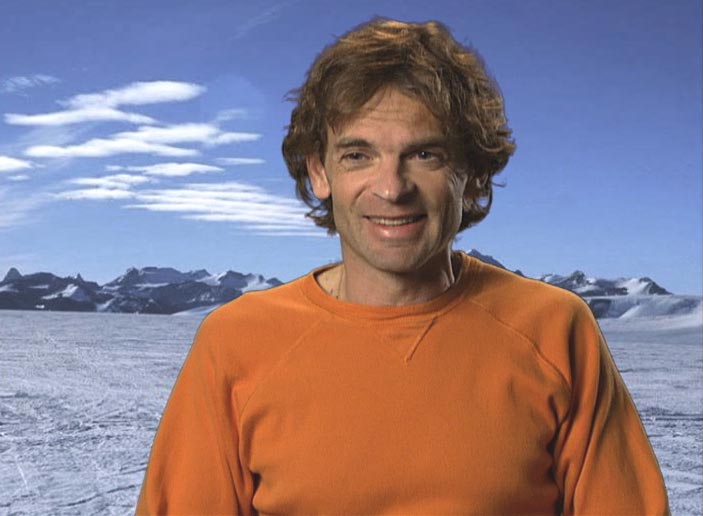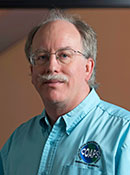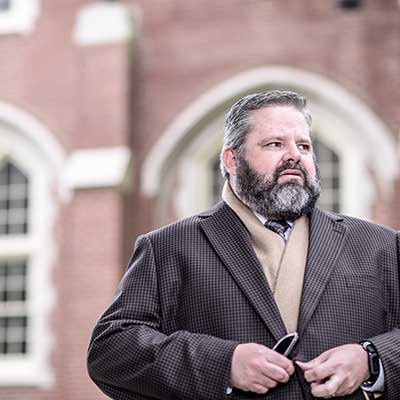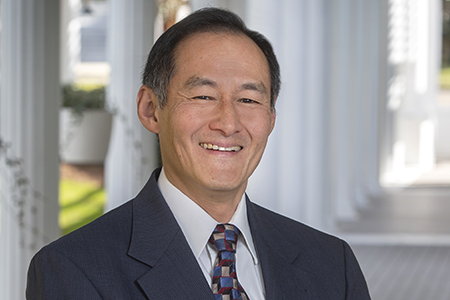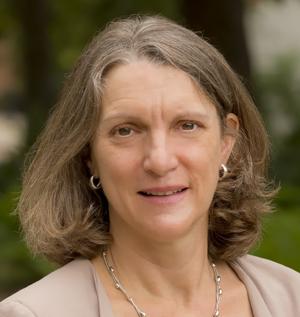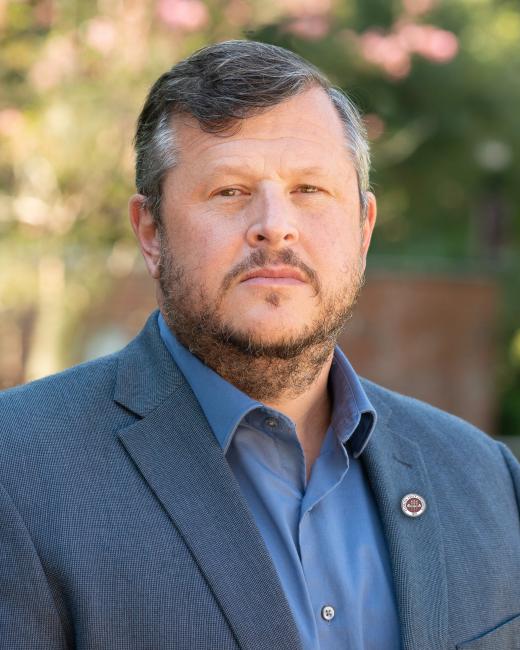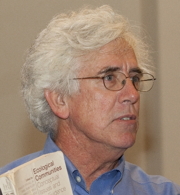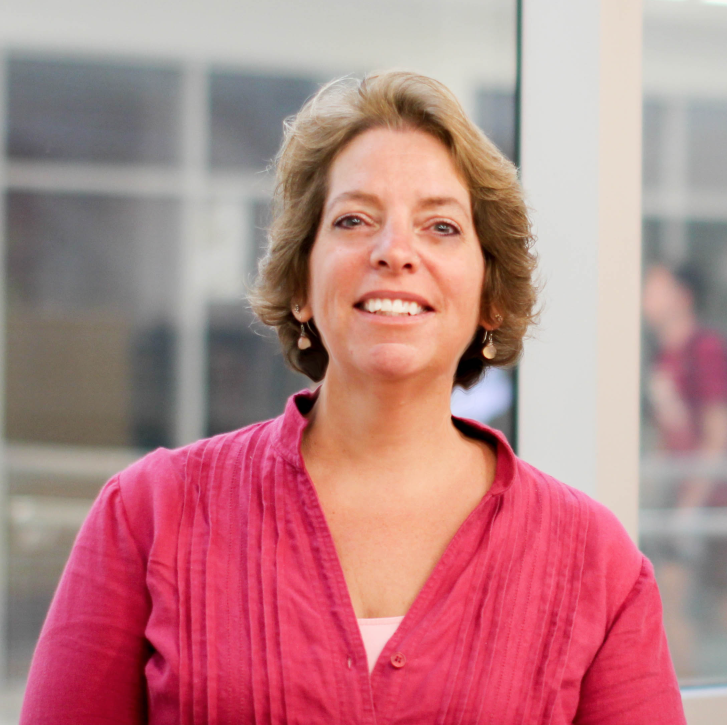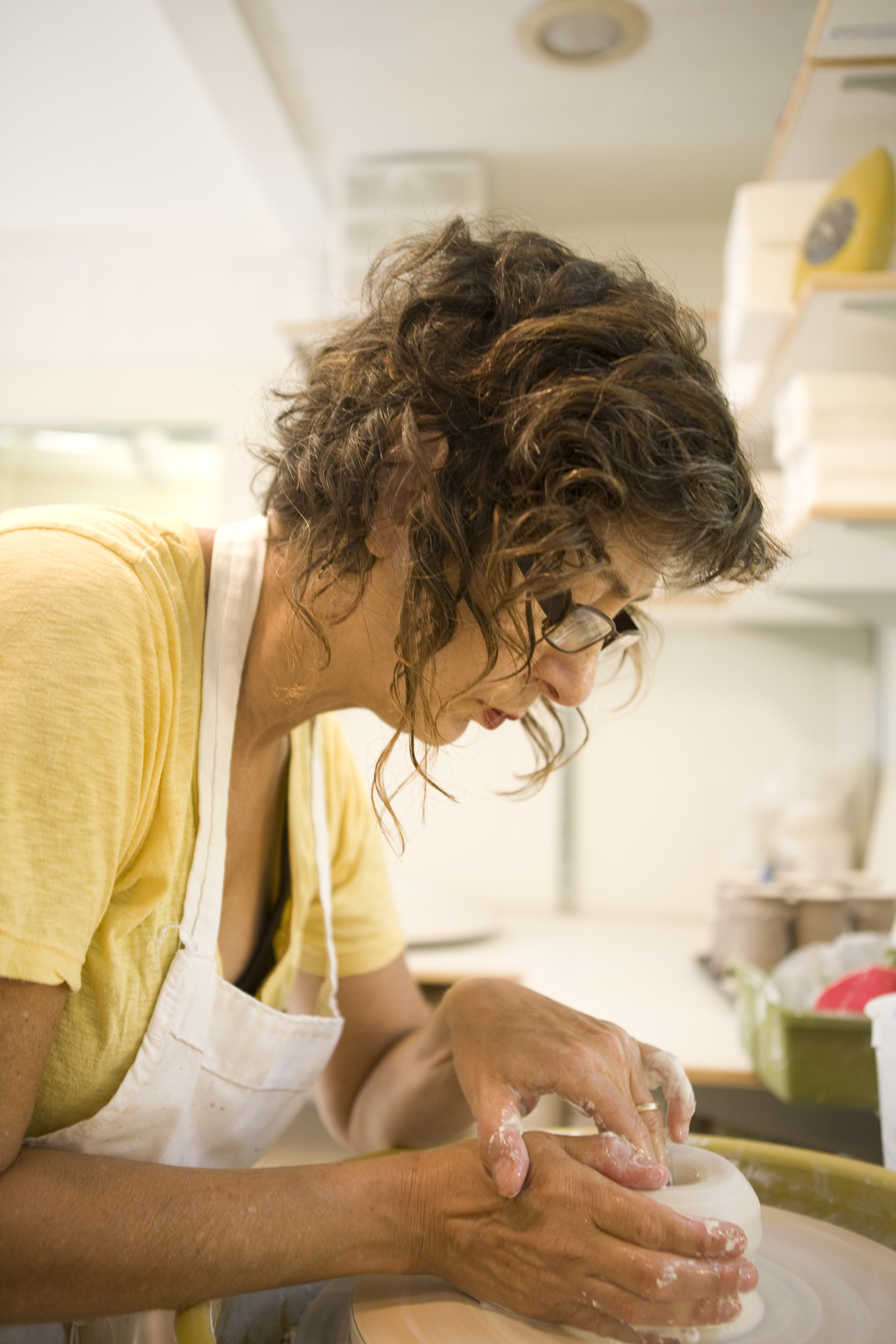Hurricanes and typhoons are battering highly populated areas as extreme weather events, flooding, power outages and more natural disasters unfold.
Newswise has experts, research and sources for media on climate science available for reporters covering Hurricane Ian and other major events around the world. Reporters can get a free press pass to access expert contacts and embargoed news [register here].
Newswise’s Experts on Climate Science and Hurricanes
Brian Tang
Email Address : [email protected]
| Kristen Corbosiero Corbosiero is interested in understanding the physical processes responsible for the formation of hurricane rainbands and secondary eyewalls, and how tropical cyclones respond to, and evolve in, vertical wind shear.
Office Phone : +15184425852 Email Address : [email protected]
|
Isaac Ginis Ginis' research has resulted in pioneering advances in modeling of the tropical cyclone-ocean interactions that have led to significant improvements in hurricane intensity forecast skills. He essentially proved that ocean temperature is the most important factor in hurricane intensity and power.
Media Office Phone : +14018744147 Media Email: [email protected]
|
Gabriel Filippelli Professor Filippelli is a biogeochemist, focusing on the flow and cycling of elements and chemicals in the environment. Media Contact Name : Andrea Zeek Media Office Phone : +18128554152 Media Email : [email protected]
|
Amir AghaKouchak His research focuses on natural hazards and climate extremes and crosses the boundaries between hydrology, climatology, remote sensing. Media Contact Name : Tom Vasich
Media Mobile No : +19492856455 Media Email : [email protected]
|
Eric Rignot Dr. Rignot works to understand the interactions of ice and climate, in particular to determine how the ice sheets in Antarctica and Greenland will respond to climate change in the coming century and how they will affect global sea level. Media Contact Name : Tom Vasich
Media Mobile No : +19492856455 Media Email : [email protected]
|
Isabella Velicogna Professor of Earth System Sciences at the University of California Irvine and a Faculty Part time at NASA/Caltech’s Jet Propulsion Laboratory Professor Velicogna uses novel geophysical methods and satellite remote sensing techniques to understand the physical processes governing ice sheet mass balance and the hydrologic cycle of high latitude regions.
Media Contact Name : Tom Vasich
MediaMobile No : +19492856455 Media Email : [email protected]
|
Matthew Rigby Professor in Atmospheric Chemistry at the University of Bristol Professor Matt Rigby's work examines sources of greenhouse gas emissions, which involves assessing ongoing atmospheric measurements.
Media Contact Name : Media PR Team
Media Office Phone : +441174282489 Media Email : [email protected]
|
Richard Pancost His research investigates long term climate change and addresses what we can learn by comparing the sudden and dramatic changes in today’s climate with the changes in climate from millions of years ago.
Media Office Phone : +441174282489 Media Email : [email protected]
|
Stephan Lewandowsky Professor Stephan’s research explores people’s responses to misinformation, propaganda and fake news. As a result of his work in climate science he was appointed Visiting Scientist at the CSIRO Oceans and Atmosphere laboratory in Tasmania.
Media Office Phone : +441174282489 Media Email : [email protected]
|
Tommaso Jucker Dr. Jucker’s research explores the processes that shape the structure, diversity and function of the world’s forests, with a view of predicting how these will respond to rapid environmental change and how this in turn will impact society.
Media Office Phone : +441174282489 Media Email : [email protected]
|
Paul A. Howard-Jones His research is focused on issues at the interface of cognitive neuroscience and educational theory, practice and policy. He applies diverse research methods in order to understand learning processes and their potential relevance to educational learning.
Media Office Phone : +441174282489 Media Email : [email protected]
|
Kate Hendry Her research covers chemical oceanography – the changes in oceans and sea water nutrients caused by melting ice in the Arctic and Antarctic regions, as a result of climate change.
Media Office Phone : +441174282489 Media Email : [email protected]
|
David Gordon Dr. David Gordon is a global specialist on how deprivation is measured. He is currently exploring the links between climate change and poverty.
Media Office Phone : +441174282489 Media Email : [email protected]
|
Robert J. Warren II His research focuses on how species interact in a changing climate. He is not only interested in how habitat drives individual species distributions, but how habitat drives the interactions between species within and across these distributions.
Office Phone : 716 878-5215 Email Address: [email protected]
|
Shao Lin Dr. Shao focuses her research in assessing the impacts of various environmental and occupational exposures, including climate change, extreme weather, disasters, and outdoor and indoor air pollution and toxicants on human health.
Email Address: [email protected] |
David Vogel David Vogel has written extensively on both environmental management and government regulation. In 2017, he received the Elinor Ostrom Award from the American Political Science Association in recognition of his lifetime contribution to the study of environmental policy.
Media Contact Name : Laura Counts
Media Mobile No : 5106439977 Media Email : [email protected]
|
Morgan Schaller Dr. Schaller studies the history of the Earth system and changes in the climate over long timescales. In recent research published in Science, Schaller identified an extraterrestrial impact as the likely trigger for the Paleocene-Eocene Thermal Maximum (PETM), a rapid warming of the Earth caused by an accumulation of atmospheric carbon dioxide 56 million years ago.
Media Mobile No : 518-951-5650 Media Email : [email protected]
|
Mark Bourassa, PhD Bourassa uses on-site and remote observations as well as meteorological models to research air-sea interactions and how satellites measure what is happening on the Earth’s surface. He is an expert in surface water waves and the identification of tropical disturbances, which are possible precursors to tropical cyclones. Bourassa is also a team leader for the NASA Ocean Vector Wind Science Team.
Media contact name : Bill Wellock Media office Phone : +18506451504 Media email : [email protected]
|
Ming Cai, PhD
Media contact name : Bill Wellock Media office Phone : +18506451504 Media email : [email protected]
|
Allison Wing, PhD Wing is an expert on climate and hurricanes. Her research group studies atmospheric dynamics and climate, with a special interest in tropical cyclones and tropical convection, the clustering of clouds and thunderstorms. She was named to Popular Science’s Brilliant 10, a recognition for early career scientists conducting groundbreaking work.
Media contact name : Bill Wellock Media office Phone : +18506451504 Media email : [email protected]
|
David Merrick, MS Merrick has worked in state emergency management for more than 15 years in roles such as planning, external affairs and air operations. He developed and currently oversees the Emergency Management and Homeland Security Program’s Disaster Incident Research Team, which deploys to disaster impact areas to perform field research on disaster and emergency management.
Media contact name : Bill Wellock Media office Phone : +18506451504 Media email : [email protected]
|
Shi-Ling Hsu, PhD
Media contact name : Bill Wellock Media office Phone : +18506451504 Media email : [email protected]
|
Eren Ozguven, PhD Ozguven's research interests include transportation accessibility, modeling of emergency evacuation operations, urban mobility and smart cities and the simulation of transportation networks. Media contact name : Bill Wellock Media office Phone : +18506451504 Media email : [email protected]
|
Patricia Born, PhD Born researches insurance market structure and performance, professional liability, health insurance and the management of catastrophic risks, such as hurricanes and other natural disasters. She is a past president of the American Risk and Insurance Association and the Risk Theory Society and is editor of Risk Management and Insurance Review. Media contact name : Bill Wellock Media office Phone : +18506451504 Media email : [email protected]
|
Charles Nyce, PhD Nyce’s main research area is catastrophic risk financing, and he has authored numerous articles on a variety of risk management and insurance topics, including title insurance, enterprise risk management, predictive analytics and natural hazards. Media contact name : Bill Wellock Media office Phone : +18506451504 Media email : [email protected]
|
Mathew Hauer, PhD Hauer studies the impacts of climate change on society. Recent work has focused on how migration caused by sea level rise could reshape the population distribution in the United States in costly and permanent ways. His research has been featured in CNN, The New York Times, The Nation and other publications.
Media contact name : Bill Wellock Media office Phone : +18506451504 Media email : [email protected]
|
Chris Uejio, PhD Uejio researches how the physical environment influences human health and well-being. He frequently helps health departments understand and adapt to climate change. Uejio has been quoted in the Orlando Sentinel, Tampa Bay Times and other news outlets about public health issues, including hurricanes.
Media contact name : Bill Wellock Media office Phone : +18506451504 Media email : [email protected]
|
Tim Chapin, PhD
Chapin studies urban planning, community planning, resilience and post-disaster redevelopment. He has researched the effectiveness of Florida’s growth management system and is an expert on land development, comprehensive planning, and state versus local roles in managing growth.
Media contact name : Bill Wellock Media office Phone : +18506451504 Media email : [email protected]
|
Dennis Smith, MS Planner in Residence, Department of Urban and Regional Planning
Smith is the director of the Mark & Marianne Barnebey Planning & Development Lab, which uses the academic and professional resources of Florida State University to connect with public and private partners to provide capacity and innovative planning for the sustainable growth and long-term viability of Florida communities. Media contact name : Bill Wellock Media office Phone : +18506451504 Media email : [email protected]
|
Thomas Miller, PhD Professor of Biological Science Miller researches coastal dune vegetation and the forces that influence plant communities on barrier islands, especially in the northern Gulf of Mexico. He has been conducting a long-term study of the vegetation at several locations to isolate the effects of hurricanes, drought, geomorphology and succession on both the vegetation living on dunes and the structure of the dunes themselves.
Media contact name : Bill Wellock Media office Phone : +18506451504 Media email : [email protected] |
Marcia Mardis, EdD Professor and Associate Dean for Research, College of Communication and Information
In the wake of Hurricane Michael, which hit Florida’s Panhandle in 2018, Mardis partnered with rural public libraries and county governments on projects that developed public libraries as community resources for responding to natural disasters.
Media contact name : Bill Wellock Media office Phone : +18506451504 Media email : [email protected] |
Holly Hanessian, MFA Professor and Head of Ceramics Concentration, College of Fine Arts
Hanessian is a member of the International Academy of Ceramics who has taught, lectured and exhibited projects and sculptural artworks in the United States and internationally. Her works include several art-based social practice projects, including a Hurricane Emergency Art Kit that is designed to address both the physical and mental health of hurricane victims and provide items such as a mini water filter, books and small ceramic art pieces.
Media contact name : Bill Wellock Media office Phone : +18506451504 Media email : [email protected]
|
|
Expert Quotes:
FSU faculty members are available to answer media questions and provide perspective for news stories throughout the 2023 hurricane season, which runs from June through November.
Mark Bourassa is a professor of meteorology and associate director of the Center for Ocean-Atmospheric Prediction Studies.
Ming Cai is a professor at the Department of Earth, Ocean and Atmospheric Science.
Bradford Johnson is an assistant professor at the Department of Geography.
Allison Wing is an associate professor at Department of Earth, Ocean and Atmospheric Science.
David Merrick is the director of the Emergency Management and Homeland Security Program and the director of the Center for Disaster Risk Policy.
Shi-Ling Hsu is D’Alemberte Professor at the College of Law.
Erin Ryan is Elizabeth C. and Clyde W. Atkinson Professor and director of the Center for Environmental, Energy, and Land Use Law.
Eren Ozguven is an associate professor at FAMU-FSU College of Engineering and the director of the Resilient Infrastructure and Disaster Response (RIDER) Center.
Patricia Born is Payne H. & Charlotte Hodges Midyette Eminent Scholar in Risk Management & Insurance.
Charles Nyce is Robert L. Atkins Associate Professor of Risk Management & Insurance and chair of the Risk Management/Insurance, Real Estate & Legal Studies Department.
Mathew Hauer is an assistant professor at the Department of Sociology and Center for Demography and Population Health.
Chris Uejio is an associate professor at the Department of Geography.
Tim Chapin is a professor of urban and regional planning and dean of the College of Social Sciences and Public Policy.
Tisha Joseph Holmes is an assistant professor at the Department of Urban and Regional Planning.
Dennis Smith is a planner in residence at the Department of Urban and Regional Planning.
Thomas Miller is a professor at the Department of Biological Science.
Marcia Mardis is a professor and associate dean for research at the College of Communication and Information.
Holly Hanessian is a professor and head of ceramics concentration at the College of Fine Arts.
With the 2023 Atlantic hurricane season officially starting on June 1 and ending Nov. 30, several Florida Atlantic University faculty experts are available to discuss various issues surrounding hurricane preparedness, evacuation and aftermath:
Anthony Abbate is a professor and director of the MetroLAB in the School of Architecture, within the Dorothy F. Schmidt College of Arts and Letters.
Fred Bloetscher, Ph.D., is a professor and associate dean for undergraduate studies and community outreach in the Department of Civil, Environmental and Geomatics Engineering within the College of Engineering and Computer Science.
Tiffany Roberts Briggs, Ph.D., is interim chair of geosciences, director of the environmental sciences program and an associate professor in the Department of Geosciences within the Charles E. Schmidt College of Science.
Dennis Hanisak, Ph.D., is a research professor and director of education at FAU Harbor Branch Oceanographic Institute.
Erik Johanson, Ph.D., is an assistant professor in the Department of Geosciences within the Charles E. Schmidt College of Science.
Ken H. Johnson, D., is a professor in the finance department and associate dean of graduate programs within the College of Business.
Brian Lapointe, Ph.D., is a research professor at FAU Harbor Branch.
Diana Mitsova, Ph.D., is a professor in the Department of Urban and Regional Planning, the John DeGrove Eminent Scholar Chair in Growth Management and Development, and director of the Visual Planning Technology Lab within the Charles E. Schmidt College of Science.
Colin Polsky, Ph.D., is a professor of geosciences and director of the Center for Environmental Studies (CES) within the Charles E. Schmidt College of Science.
John Renne, Ph.D., is a professor in the Department of Urban and Regional Planning and director of the Center for Urban and Environmental Solutions within the Charles E. Schmidt College of Science.
Peter Ricci, Ed.D., is clinical professor and director of FAU’s hospitality and tourism management program within the College of Business.
James Sullivan, D., is the executive director of FAU’s Harbor Branch.
Kristen Corbosiero, associate professor in the Department of Atmospheric and Environmental Sciences, studies hurricane formation, as well as structure and intensity change. Her research specifically focuses on the interaction between tropical cyclones and the environments in which they are embedded.
“As we approach the 2023 Atlantic hurricane season, it is uncertain what this season will bring. There is a developing El Niño in the Pacific, which typically suppresses hurricane activity in the Atlantic. On the other hand, ocean temperatures throughout much of the Atlantic are running much warmer than normal, which typically enhances hurricane activity."
Brian Tang, an associate professor in the Department of Atmospheric and Environmental Sciences, specializes in various aspects of tropical cyclones, including their formation and intensification. He’s currently leading a $2.15 million Office of Naval Research project to help forecasters better understand and predict the rapid intensification of hurricanes.
“Regardless of the number of hurricanes this season brings, it only takes one intense hurricane hitting a metro area to make it a bad season, especially given the decades of population growth in hurricane-prone areas, along with climate change making storm surge and flooding from hurricanes worse."
Joshua Basseches, a climate change policy and politics expert at Tulane University School of Liberal Arts, believes the call for electrical conservation in Texas could become the new normal unless ERCOT shores up an available power supply and builds sufficient transmission capacity to add more reliable sources of generation/storage.
“We see the Texas (ERCOT) grid under significant strain during extreme weather (whether hot or cold, like winter 2021). The question is how far things can bend before they break. ERCOT’s problems are exacerbated by the lack of a capacity market (which pays generators to be ready even when they aren’t needed) and by the lack of interconnection to other independent system operators due to Texans’ longstanding desire to be relatively independent of the purview of the Federal Energy Regulatory Commission (FERC). Both make Texas’ situation highly unusual. Most ISOs are in multiple states, which puts them under the jurisdiction of FERC and gives them more flexibility to meet unusually high levels of demand.”
As wildfires rage across Canada, the smoke has drifted over parts of the U.S. and caused a haze to fill the skies. IU experts are available to discuss the impact of wildfires on air quality and how vulnerable populations can protect themselves.
Video: Clips of Phil Stevens, Rudy Professor in the O'Neill School, discussing indoor air quality from the wildfires are available for download.
New York City set a record last week for the worst recorded air quality the city has ever seen due to wildfire smoke drifting from Canada. At its peak, the Air Quality Index (AQI) for the city reached 405 out of 500 — the highest since records began.
Many other cities in the eastern U.S., including Albany, were also impacted, engulfed in an orange-colored, smoky haze for several days.
Jim Schwab, senior research faculty, emeritus, has studied atmospheric chemistry and air pollution for more than 30 years at the University at Albany’s Atmospheric Sciences Research Center. We caught up with him to learn more about this unprecedented air pollution event and if New Yorkers should expect more wildfire smoke to reach them in the future.
“Air pollution is a major public health issue that has been related to a variety of ailments such as asthma, lung cancer, heart disease, and stroke,” says Domenico Praticò, M.D., Professor and Director of the Alzheimer’s Center at Temple.
“We now have evidence that air pollution, such as wildfire smoke, poses a hazard to the brain as well,” Praticò says.
Air pollution is projected to kill approximately 9 million people each year, and the World Health Organisation has designated it as the single greatest environmental health concern.
Domenico Praticò, MD, is the Scott Richards North Star Charitable Foundation Chair for Alzheimer’s Research, Professor and Director of the Alzheimer’s Center at Temple, and Professor of Pharmacology at the Lewis Katz School of Medicine at Temple University.
University of Oregon researchers are available to talk about wildfire smoke.
Cassandra Moseley
Research Professor, Institute for a Sustainable Environment
Senior Policy Advisor, Ecosystem Workforce Program
Cassandra Moseley focuses on wildfire policy and management including wildfire risk reduction, prescribed fire, community preparation, response, and recovery, as well as wildfire suppression and contracting and how wildfires are changing in the American West. She has a particular focus on how natural resource policies affect rural communities, businesses, and workers, including immigrant forest workers. She examines how communities organize to increase resiliency to economic, social and environmental change. Cass can speak about forest land management and firefighters/contracted services. She can also speak about community wildfire preparedness.
Michael Coughlan
Faculty Research Associate, Institute for a Sustainable Environment
Michael Coughlan examines social, cultural, and ecological aspects of landscape conservation with a specific focus on fire management. He uses a social-ecological systems approach to study historical and contemporary interactions between society and wildfires.
Benjamin Clark
Associate Professor, School of Planning, Public Policy and Management
Co-Director, Institute for Policy Research and Engagement
Benjamin Clark’s work centers on improving the government’s ability to use data on wildfire smoke during events and improving the effectiveness of cleaner air shelters and the care for vulnerable populations during smoke events.
CLIMATE CHANGE AND WILDFIRES
Daniel Gavin
Professor, Geography
Dan Gavin is an expert in climate change and the impacts of climate change and fires on ecosystems over time. He has used tree-ring records and the longer records in lake sediments to understand how forests respond to climate change, insect outbreaks and fires. When talking about drought, Dan can weigh-in on the historical precedents for large or severe fires.
SMOKE AND WILDFIRE COMMUNICATION
Hollie Smith
Assistant Professor, Science and Environmental Communication
Hollie Smith studies communication around natural hazards, including smoke and wildfire. Her research focuses on communication and media dynamics of environmental issues.
Experts at the George Washington University are available to offer insight, analysis and commentary related to the wildfires in Canada, including the public health impact of wildfire smoke as well as the impact of climate change and policy actions to address the crisis.
Lynn R. Goldman, the Dean of the GW Milken Institute School of Public Health, is an expert on public health preparedness and has deep knowledge of the intersection of policy and public health. She can talk about policy solutions to polluted air and is also a pediatrician and can talk about the impact of air quality on children.
Susan Anenberg, is Director of the GW Climate & Health Institute, and professor of environmental and occupational health. Anenberg’s research focuses on the health implications of air pollution, including smoke from wildfires and climate change. Anenberg can discuss the benefits of staying indoors when air quality is poor and the risk of inhaling pollutants from smoke.
Katelyn O'Dell is an atmospheric scientist and a postdoctoral research scientist at GW who studies air pollution exposure and its health impacts. She can discuss the public health concerns of wildfire smoke exposure. O’Dell’s graduate work has focused on quantifying exposure to wildfire smoke and identifying health-relevant components in smoke. She can discuss the health issues raised by inhaling smoke-filled air, including asthma and respiratory problems.
Neelu Tummala is a clinical assistant professor of surgery and is Co-Director of the Climate Health Institute with a special interest in the effects of climate change on population health. She recently wrote that climate change is a medical problem as well as an environmental issue. She is available to discuss climate change’s connection to wildfires and air pollution.
Jonathan Deason is the Co-Director of GW’s Environmental and Energy Management Institute and a professor in the GW School of Engineering and Applied Science. His expertise includes all aspects of air quality management, including greenhouse gas management and implications for global climate change mitigation and adaptation.
Lisa Benton-Short is a professor of geography at GW and an expert on urban sustainability and environmental issues in cities. Her research focuses on the dynamics of the urban environment from many angles, including planning and public space, urban sustainability, globalization, and immigration. Benton-Short can speak to the wildfires in Canada from a climate change perspective as well as the role of uncontrolled suburban development. She can also discuss how climate change and its effects on natural disasters like wildfires impact cities as well as what cities are doing to adapt to and mitigate climate change.
Pratim Biswas, a renowned expert on aerosol research, dean of the College of Engineering, and one of the founding members of the Center for Aerosol Science and Technology (CAST), said people need to protect themselves from the smoke, which has many harmful chemical constituents.
“The best way to protect yourself if you have to go outside is to wear a filter mask,” said Biswas. “One of the best is the N95 mask, but anything is better than nothing. So, the surgical masks may be good if that’s all you can find. If you are immunocompromised or have asthma, it could trigger serious conditions, so those individuals should definitely be masked.”
The smoke from Canada’s fires contains a dangerous mixture of gaseous and particle pollutants, according to Cassandra Gaston, an associate professor of atmospheric sciences at the Rosenstiel School of Marine, Atmospheric, and Earth Science.
“Recent studies have pointed out that smoke particles from fires contain quite a bit of material that’s toxic when inhaled, so this is very concerning,” said Gaston, who along with Kumar, is also a member of CAST. “The EPA monitors, regulates, and issues warnings based on concentrations of particles in the atmosphere, and a lot of those regulations come down to the size [of the particles]. The smaller particles are more hazardous to health, and smoke particles do tend to be in the smaller particle size range.”
Chang-Yu Wu, a professor and chair of the Department of Chemical, Environmental and Materials Engineering, was one of the first aerosol researchers to find evidence that COVID-19 traveled through the air, changing the course of safety guidelines during the pandemic.
Wu said that particles released into the air from wildfires often contain aromatic hydrocarbons, which in high concentrations—like in the aftermath of the twin towers collapse in Manhattan on Sept. 11, 2001—are known to cause cancer. The smoke from the Canada wildfires also could impact future weather, he said.
Gillian Goobie, MD, PhD, is vice chair of the American Thoracic Society's Environmental Health Policy Committee.
Dr. Gillian Goobie completed her MD and Internal Medicine training at the University of Calgary followed by her Respirology fellowship at the University of British Columbia. After her fellowship, she trained at the University of Pittsburgh for three years, obtaining her PhD in the School of Public Health with a focus on environmental epigenetics and investigating the impact of air pollution on patients with interstitial lung disease (ILD).
Currently, Dr. Goobie is a clinical assistant professor at the University of British Columbia and respiratory medicine physician at St. Paul's Hospital in Vancouver, Canada. In her ongoing research, Dr. Goobie is working to expand our understanding of how one's lived environment interacts with their genetics to contribute to the development and progression of ILDs.
What is the impact of the wildfires on air quality? What can vulnerable populations do to protect themselves from the potential health impact? Has climate change had an influence on the wildfires? Experts from Indiana University are available to answer these questions and others.
Matthew Cook
Environmental Health and Safety
Matthew Cook is the director of occupational safety and industrial hygiene at Indiana University. He began his career working in the public sector as an environmental regulator, then joined the private industry as an industrial hygiene consultant serving the automobile, pharmaceutical, manufacturing, medical device and energy sectors.
Expertise
Occupational safety and health, industrial hygiene, indoor air quality, water remediation.
Gabriel Filippelli
School of Science/Department of Earth Sciences
Gabriel Filippelli is executive director of the Environmental Resilience Institute. He can discuss the smoke from Canadian wildfires that is impacting the air quality and ultimately the health of individuals across the Northeastern United States.
Expertise
Earth sciences and human health, remediation technology, sediment geochemistry, chemical weathering, nutrient cycling, paleoceanography, terrestrial metal cycling.
Graham McKeen
Environmental Health & Safety
Graham McKeen is assistant university director of public and environmental health at Indiana University. He is an experienced public and environmental health professional skilled in management, policy analysis, and public and environmental health.
Expertise
Public health, environmental health, food safety, communicable disease, COVID-19, water quality, pest management.
Philip S. Stevens
Philip Stevens is Rudy Professor and associate dean for faculty affairs at the O’Neill School of Public and Environmental Affairs. His research is focused on the characterization of the chemical mechanisms in the atmosphere that influence indoor air quality, regional air quality and global climate change.
Expertise
Atmospheric chemistry, environmental toxicology and chemistry, indoor air quality, regional air quality, global climate change.
Jennifer Horney, professor and founder of the University of Delaware's epidemiology department, can provide expert insight into the health impacts of smoke from wildfires in Canada currently smothering the northeast and other regions of the U.S.
Horney, core faculty with UD's Disaster Research Center, was one of the top voices during the COVID-19 pandemic and has been on the ground after hurricanes and other disasters. Her research focuses on the impacts of natural disasters on public health, as well as linkages between disaster planning and the actions communities and individuals take to prepare, respond and recover.
How dangerous is the air pollution from the Canadian wildfires? How can people protect themselves?
Khalil Savary, a pediatric pulmonologist at Rutgers New Jersey Medical School, Robert Laumbach, an air-quality expert from the Rutgers School of Public Health and Anthony J. Broccoli, an atmospheric scientist at the Rutgers School of Environmental and Biological Sciences, have answers.
Tips from Savary on reducing exposure:
- Close your windows and prevent external air from entering the house through vents and exhausts. If there is a period of improved air quality, open your windows to help clear particles which entered.
- Try and circulate air inside with fans or air conditioning that does not draw air from outside or draws outside air through a HEPA filter.
- Reduce indoor air quality hazards. Avoid smoking, non-electric stoves/ furnaces, spray aerosol products, and vacuuming without a HEPA filter.
- If you must go outside, wear a fitted n95. Surgical masks, cloth masks, and ill-fitting n95 masks are not effective protective equipment.
- Reduce activity outdoors.
- When in a car, keep vents and windows closed; use the recirculate feature.
Quotes from Laumbach:
Due to the smoke from wildfires in Canada, particle air pollution in NJ and across the region has reached levels not seen in many years.
Particle pollution can worsen asthma and other lung and heart conditions, and everyone is at risk of adverse health effects at the current "Unhealthy" Air Quality Index (AQI) particle pollution levels.
To reduce exposure and risk, people can follow the AQI on EPA's AirNow.gov, minimize time spent outdoors, reduce outdoor physical activity levels, use portable air cleaners, and may consider the use of N95 respirators or equivalent face masks if outdoor activity is unavoidable.
Due to climate change, episodes of wildfire smoke air pollution are likely to continue to increase in frequency, and people should be prepared to take action to reduce risk for themselves and their families.
Quotes from Broccoli:
This unusual situation results from a combination of wildfires in eastern Canada and a persistent weather pattern bringing the smoke from those fires south across our area. There's another wave of heavier smoke that is just moving into northwestern New Jersey now and spreading south, southeastward. I expect that things in much of New Jersey will get worse before they get better.






